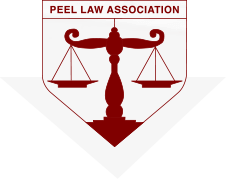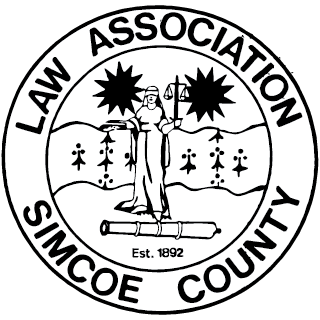Table of Contents
Although you and your partner are legally entitled to an equal share of the profits of your marriage when you separate or divorce, dividing assets is an intricate process. In Ontario, this division is referred to as the equalization of net family property and involves the assets and liabilities you and your partner have accumulated throughout your marriage. We spoke with family law lawyer Paul Slan from Gelman & Associates for more information about how equalization works in Ontario and how it affects property division during a separation or divorce.
How Do You Calculate Net Family Property Equalization in 2024 in Ontario?
Partners who decide to separate or divorce are legally entitled to a division of the property they have collected during the marriage (with some exceptions), known as the equalization of net family property. Under the Ontario Family Law Act, net family property refers to the net value of each partner’s assets and liabilities (debts) on three key dates:
- Date of marriage;
- Date of separation; and
- Current date
To calculate net family property, the net value of assets held on an individual’s date of marriage is subtracted from the net value of assets they held on their date of separation. To initiate calculations, each party must disclose the value of their relevant assets and liabilities by completing a form 13.1: Financial Statement. In Ontario, net family property may include a variety of assets, including:
- Land
- Stocks
- Pensions
- Bank accounts
- Vehicles
- RRSPs
- And more
It is important to note that certain assets may be excluded from the calculation of an individual’s net family property, such as gifts or inheritances. In most cases, once each party’s net family property has been determined, the value will be equalized so that assets are distributed evenly between partners.
What Are Equalization Payments in Family Law?
Equalization payments are the method by which the value of net family property is divided equally between each partner. Equalization payments entail the party with the higher net family property paying the party with the lower net family property an amount of money which balances the difference between their values. For example, if one party is worth $2,000,000 and the other is worth $1,000,000, the first party will pay the second $500,000 in order to equalize their net family properties.
The amount of the equalization payment will vary depending on the value of each party’s net family property and may be aided by the filing of a Form 13B: Net Family Property Statement. There are a variety of ways that equalization payments can be made and their fulfillment may be left to the discretion of the separating couple. If partners cannot agree on the equalization payment themselves, it can be decided in court.
With the aid of professional legal advice, calculating net family property and equalization payments during your divorce can be much less complicated. Schedule a consultation with our family law lawyers at Gelman & Associates today if you have questions about dividing your assets during a separation or divorce.
How is The Matrimonial Home Treated in Equalization of Net Family Property?
Under the Ontario Family Law Act, the matrimonial home is treated uniquely when it comes to the equalization of net family property upon the dissolution of a marriage. A matrimonial home refers to any property in which either partner has an interest and which is currently, or was at the time of separation, “ordinarily occupied by the person and his or her spouse as their family residence.”
When calculating net family property, each partner will deduct the value of assets they brought into the marriage but do not deduct the value of their matrimonial home, even if the matrimonial home was owned before marriage. This condition applies as long as the home is still in use as the matrimonial home at your date of separation. As a result, the entire value of a matrimonial home will be included in a party’s net family property, not just its increase in value since the start of the marriage. If the matrimonial home was owned jointly, its value will be split equally between each partner’s net family property.
If you or your partner sold a matrimonial home at any point during the marriage and it no longer serves as your matrimonial home, then it becomes a regular asset its marriage date value can be subtracted during your net family property calculations.
The unique treatment of the matrimonial home by the Family Law Act can have considerable effects on net family property calculations and may be an important factor to consider for partners who live together. Advice from our family law lawyers at Gelman and Associates can help you determine the best way to organize property and handle matrimonial homes upon separation or divorce. Contact us today.
What is Considered an Unequal Division of Net Family Property?
According to Section 5(6) of the Ontario Family Law Act, there are certain circumstances under which net family property may not be divided equally. After net family property has been finalized, either party can claim that the equalization payment should be less or more than what has been determined. To successfully change an equalization payment, an individual must prove that maintaining the original equalization payment would be unconscionable.
The threshold test for unconscionability is extremely high, so a claim must be remarkable for an unequal division of property to occur. Equalization may be deemed unconscionable when a couple’s period of cohabitation is extremely short, a partner has failed to disclose certain debts or liabilities, or an intentional or reckless depletion of net family property has taken place. The outcome of the claim will be subject to court decision.
How is Equalization of Net Family Property Dealt With in Cases of Financial Abuse
Equalization of net family property may be treated differently when delinquent behaviour like financial abuse is involved. If an individual wishes to request a change in their or their partner’s equalization payment due to financial abuse, they may have to prove unconscionability in court. Financially abusive behaviour can be correlated with unconscionable behaviour, such as intentional or unreasonable depletion of assets during cohabitation or reckless accumulation of debts or liabilities.
In cases where adequate evidence of financial abuse is provided, an unequal division of net family property might occur. Although the test for unconscionability is extremely high, family law lawyers can be useful for properly collecting and exhibiting evidence in court.
Schedule a Consultation Today for Advice On Equalizing Your Net Family Property
Making sure you receive the assets you are entitled to upon the dissolution of your marriage is of the utmost importance. Understanding how your net family property and equalization payments are calculated can help ensure you have been compensated fairly. With professional legal advice, you won’t have to deal with the stress or complexities of equalization alone. Schedule a consultation with our family law lawyers at Gelman & Associates today for guidance on equalizing net family property following your separation or divorce.
Disclaimer: For specific legal advice on your family law matter, please consult with a family law lawyer. The content in this article is not intended to act as legal advice and is instead intended to act as a general overview of a legal topic.













